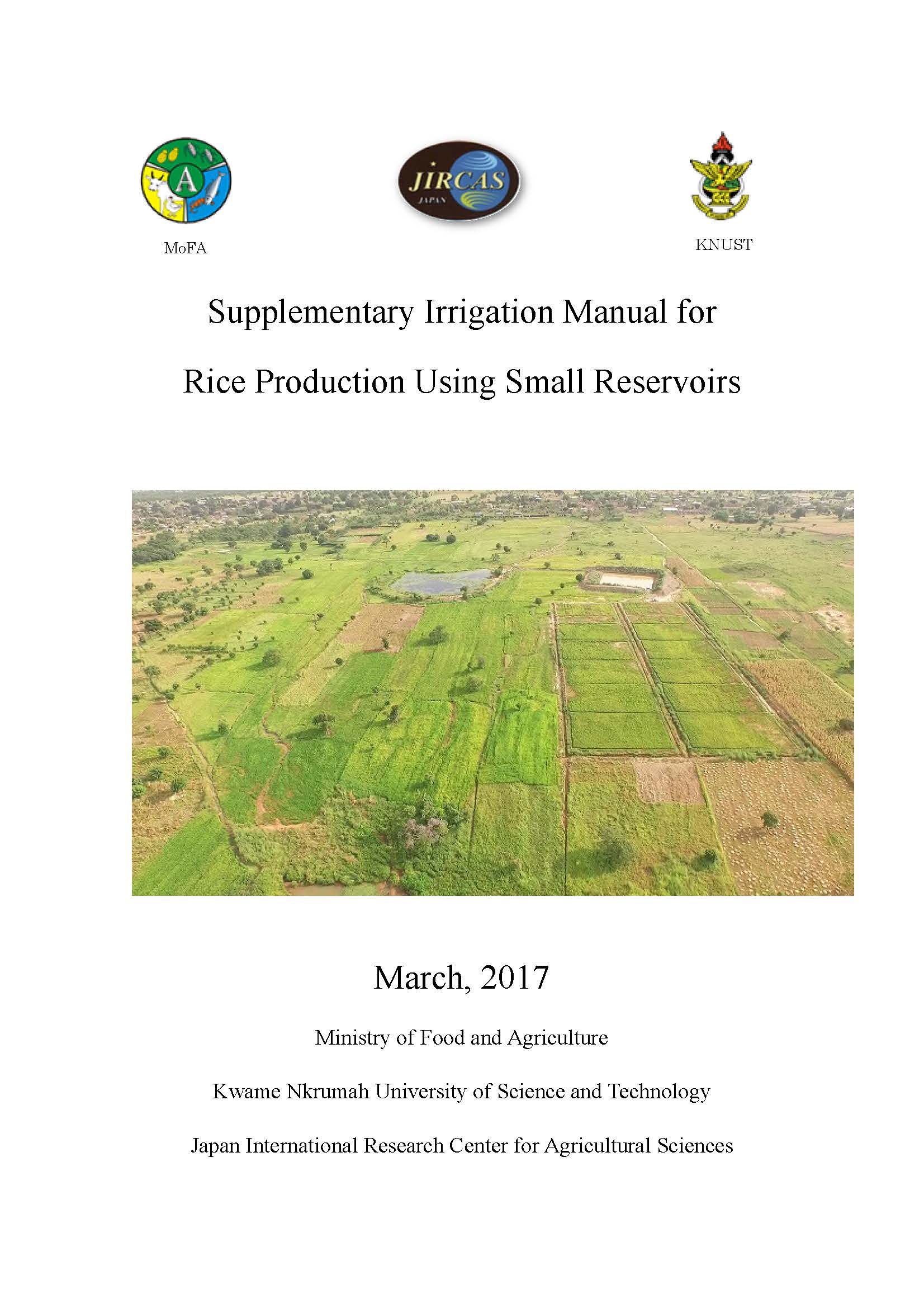Supplementary Irrigation Manual for Rice Production Using Small Reservoirs

In sub-Saharan Africa, rice production falls short of consumption. As aresult, the region’s imports of rice from Asia or North America have beenincreasing year by year. In addition, according to “Prospects for GlobalFood Supply and Demand in 2021” by the Ministry of Agriculture,Forestry and Fisheries of Japan, the global demand for food, such ascereals, will continue to slightly exceed supply in the future, so a modestupward trend in food prices is expected to continue. Therefore, it is urgentnot only to take emergency measures but also to increase food productionin the medium to long term.
Given such situations, at the Fourth Tokyo International Conference onAfrican Development (TICAD IV), international organizations, such as theJapan International Cooperation Agency (JICA), established the “Coalitionfor African Rice Development (CARD),” with the goal of doubling riceproduction in Africa in ten years. Even in Africa’s inland wetlands, whichhave great potential for rice cultivation, the average rice yield is just 2 t/ha,with farmers relying on rainwater for their crops. As a result, the area forrice cultivation is not increasing. In addition, farmers are reluctant toinvest in rice cultivation because of social and economic problemsassociated with land ownership or the distribution of rice.
Moreover, it is expected that, in the long term, in sub-Saharan Africa theamount of precipitation will decrease, and the rainfall pattern will becomeunstable (Consultative Group on International Agricultural Research). Tocope with such situations, it is necessary to develop small-scale irrigationfacilities, such as micro reservoirs that can be constructed quickly,maintained easily, and adjusted flexibly to changes in the environment. Atpresent, however, reservoirs are not being developed sufficiently enoughbecause of poor construction techniques or high costs involved. There arealso cases in which water management organizations do not function asintended if the constructed facilities are ineffectively used. Therefore, thedevelopment of low-cost construction techniques as well as methods forfarmers to maintain the facilities and manage water is expected to lead to asubstantial increase in agricultural productivity.
Under these circumstances, Ministry of Agriculture Forestry and Fishery in Japan requested JIRCAS to implement the study to increase (stable) the rice production with using micro reservoirs. JIRCAS decided the study country in Ghana and implemented the study with mutual collaboration with MoFA and KNUST from 2014 to 2017.
This manual is the result of the study. I hope this manual may contribute to rice cultivation especially in the savanna zone.
| 刊行年月日 | |
|---|---|
| 作成者 | Ministry of Food and Agriculture Kwame Nkrumah University of Science and Technology Japan International Research Center for Agricultural Sciences |
| 著者キーワード | Sub-Saharan Africa rice Irrigation |
| 公開者 | Japan International Research Center for Agricultural Sciences |
| オンライン掲載日 | |
| 国立情報学研究所メタデータ主題語彙集(資源タイプ) | Technical Report |
| 国立情報学研究所メタデータ主題語彙集(地域) | 海外 アフリカ |
| 関連するリソース | 異版あり : Supplementary Irrigation Manual for Rice Production Using Small Reservoirs (in Japanese) |
| 言語 | eng |
